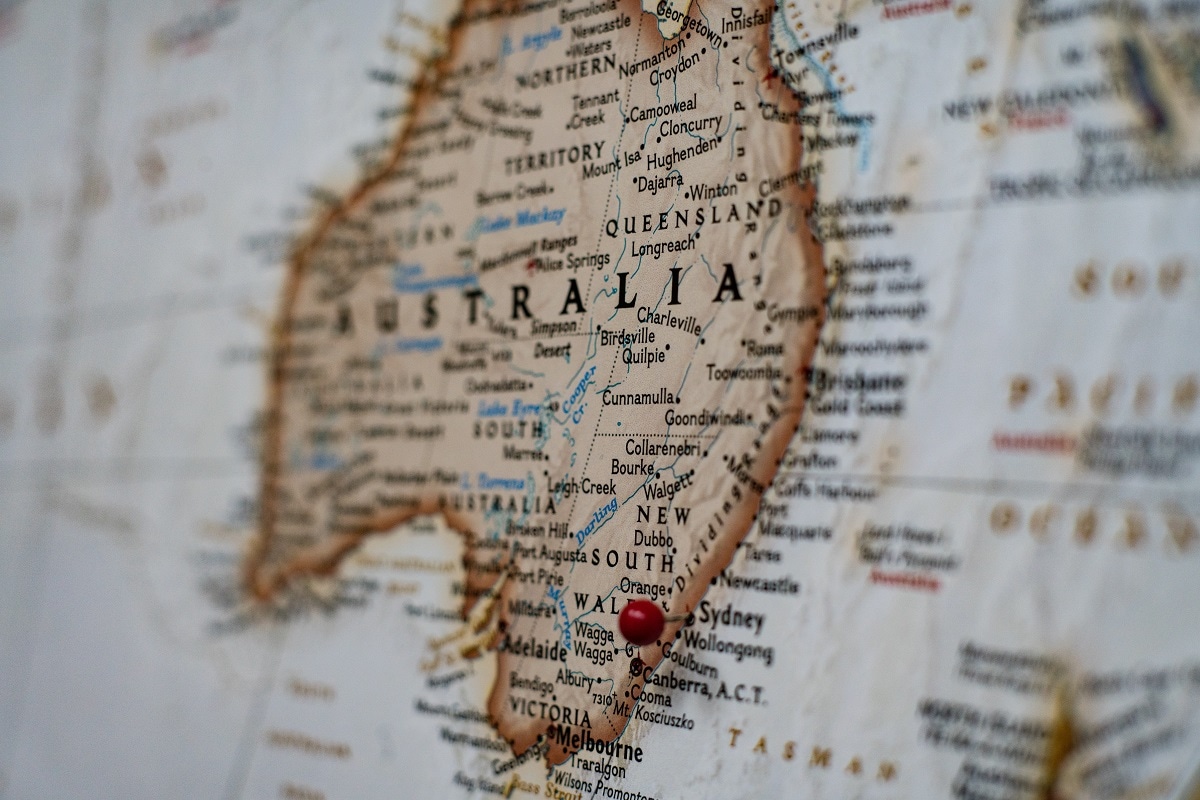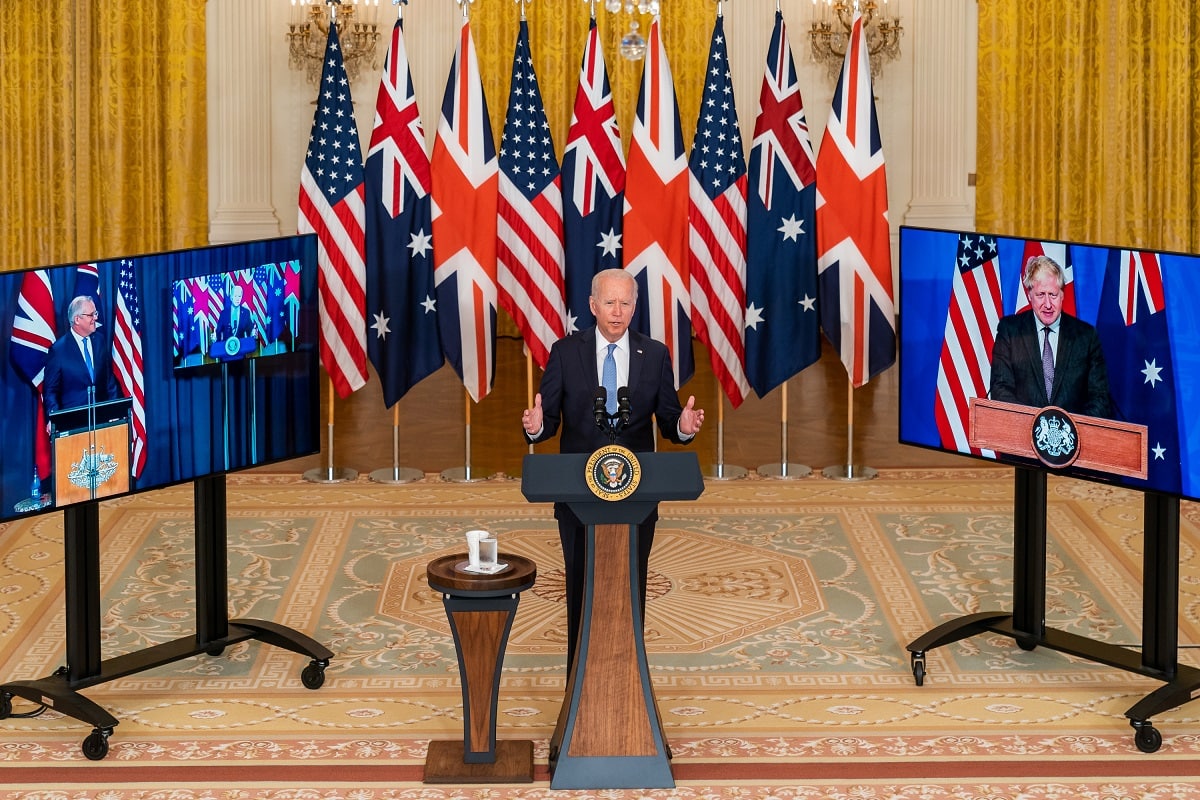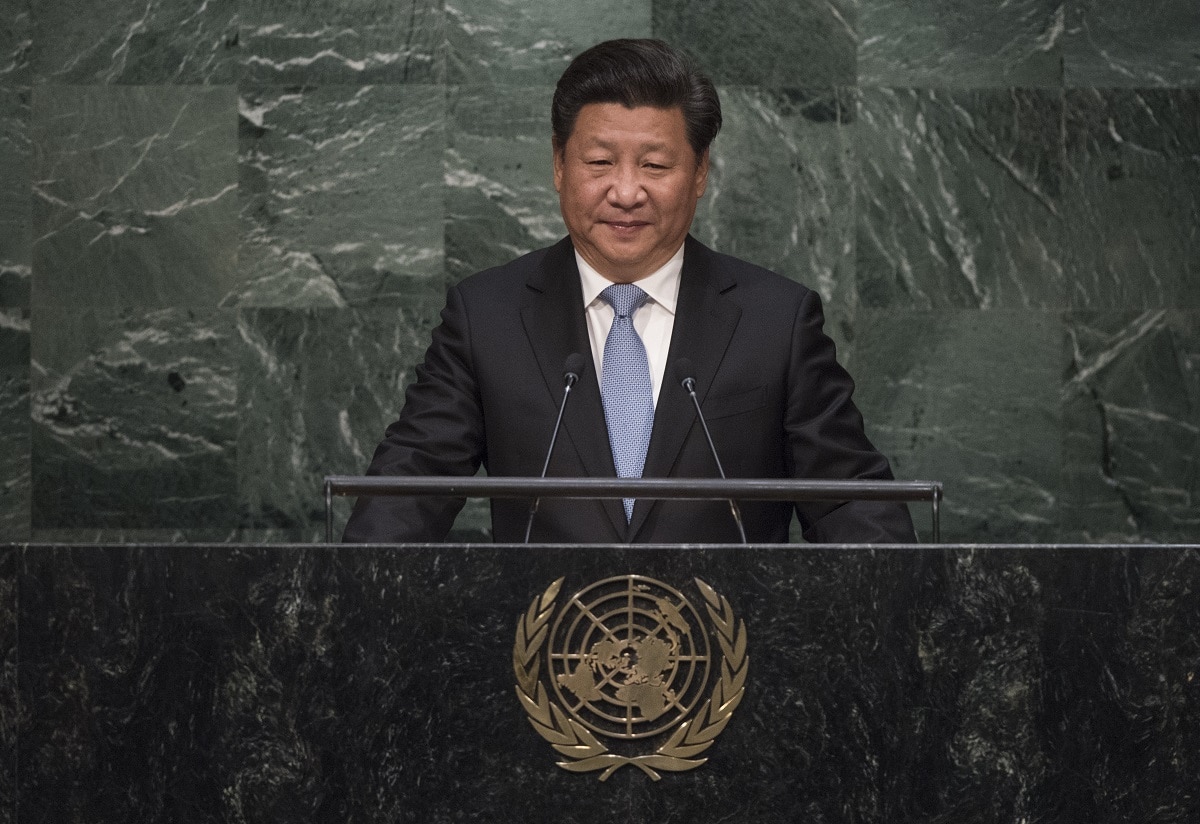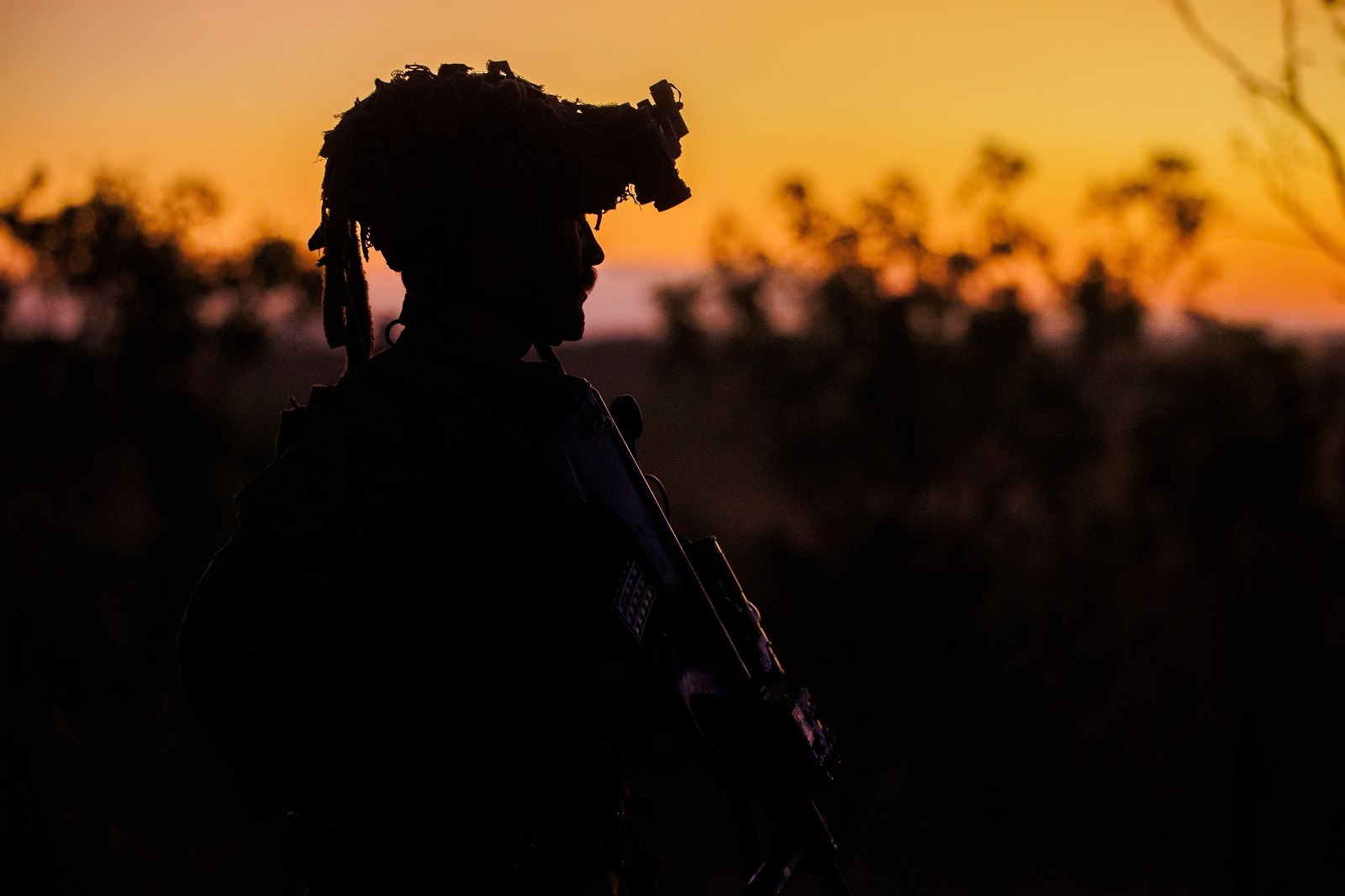Sharper choices: How Australia can make better national security decisions
In a complex and competitive national security environment, new ways of thinking on strategic decision-making are key.

- Global disorder and China’s rise are creating a more complex and competitive national security environment that will present governments with tougher choices and more of them.
- A new national security strategy would help guide policymakers but strengthening the decision-making process would do more to improve the quality of national security decisions.
- To do so, Canberra should commit to more rigorous decision-making procedures and more frequently seek multiple discrete and independent assessments of complex problems.
Executive summary
As Australia’s national security environment has grown more complex and competitive, the country’s governments have gradually articulated their strategic response, primarily in the 2016 Defence White Paper, the 2017 Foreign Policy White Paper, and the 2020 Defence Strategic Update. In these documents, and in major speeches, Australian governments have adopted four broad strategic concepts: the embattled rules-based order, the return of great power competition, the expansion of grey zone competition, and the increased likelihood of major power war.
There is no master theory that can entirely explain Australia’s situation and guide its decision-makers. A national security strategy is necessary, but its utility will be limited by the increasingly unpredictable course of geopolitics. The strategic concepts Australia has adopted illuminate its interests, objectives, and the types of issues Canberra must grapple with. But these concepts also mask many of the difficult choices Australia will face. Focusing on the paradox of “competitive independence” brings additional clarity to the country’s policy dilemmas but does not resolve them.
Responding to greater uncertainty will require greater case-by-case decision-making. But this does not mean the government should simply muddle through. Rather, it should seek to improve the quality of its decision-making by following through on Australia’s history of imposing more structure on national security decision-making. Acknowledging the complexity of the challenges it faces, the government should more often seek discrete assessments of national security problems to ensure that all relevant dimensions are considered. This would help ensure that Australia’s long-term strategic goals are considered when critical decisions are made.
China choices
As Australia’s national security environment has toughened, so too have the decisions facing government. Canberra has stopped insisting that it will never have to choose between the United States, its old ally, and China, its main trading partner. Instead, Beijing’s efforts to reshape the Indo-Pacific have compelled the federal government to make a series of unfamiliar, difficult, and sometimes quickly improvised decisions. [1] In recent years, Canberra has had to respond to China’s interference in Australian politics; [2] persistent cyber pressure; [3] attempts to gain leverage through investment; economic pressure; and efforts to gain a military toehold in the South Pacific. [4] This blurring of old distinctions between security, economics, development, and technology is a recurring theme of the new geopolitics.
Australia’s abrupt cancellation of the contract with the French firm Naval Group for a conventional fleet of submarines outraged Paris, which directed its ire at both Australia and the United States.
Canberra’s two biggest calls in this period have been its August 2018 decision to exclude “high risk vendors”, principally the Chinese company Huawei, from tendering for Australia’s 5G network and the September 2021 announcement that Australia would acquire nuclear-powered submarines as part of a new trilateral security and technology partnership with the United States and the United Kingdom known as AUKUS.

The Huawei ban was, according to journalist Paul Kelly, the “single most important security-related decision in years”. [5] It is easy to forget that the decision was not a straightforward one. At the time, it was widely assumed that Australia’s economic future would depend heavily on its 5G infrastructure, and that Huawei offered the best deal. If other Western countries, including the United States, had not followed Australia’s lead, Huawei might still have emerged as the unrivalled leader in the 5G market, leaving Australia isolated from this technological ecosystem and economically weakened.
Australia’s decision to acquire nuclear-powered submarines through AUKUS was a much bigger bet. It remains unclear how, when, and even if Australia will acquire the boats, as well as how Australia will fill the capability gap caused by the termination of an earlier contract for conventionally powered submarines with France. As Kelly notes, the project remains one of “daunting complexity without parallel in our history — the construction of nuclear-powered submarines by a country with no nuclear industry”. [6] Australia’s abrupt cancellation of the contract with the French firm Naval Group for a conventional fleet of submarines outraged Paris, which directed its ire at both Australia and the United States. The decision also alarmed Indonesia and Malaysia. [7] Although Australia’s plan to use highly enriched uranium to power a future fleet of submarines accords with international law, it could dangerously weaken efforts to reduce the global use of weapons-grade uranium. [8]
Global disorder
China, however, is far from the only challenge to Australia’s national security. Climate change poses a planetary threat that can only be countered through increased international cooperation. But the cooperative mechanisms needed to address global threats such as this are being weakened by more competitive geopolitics, a trend underscored by the disorderly global response to the Covid-19 pandemic. Assumptions about the most basic normative restraints on state behaviour meanwhile have been further shaken by Russia’s attempt, since February 2022, to conquer and annex Ukraine.
Geopolitical competition is not limited to US–China rivalry. In a more interconnected and multipolar world, more states are using more tools to compete in more areas. Geoeconomics — the use of economic tools for strategic ends — is resurgent. [9] At the same time, rapid technological development is creating both new instruments for statecraft and new domains to be contested, particularly in cyber and outer space. [10]

The challenge posed by a rising China and by US–China rivalry to Australia is more complicated than the Cold War was. Modern China is more enmeshed in the global economy, and especially Australia’s economy, than the Soviet Union ever was. At the same time, Australia cannot be as confident about the stability and reliability of its ally, the United States, as it could be before the ascendancy of Donald Trump to the US presidency. The populist nationalism Trump embodies still constrains US policy and presents an enduring threat to democracy, in the United States and elsewhere.
Australia’s national security environment contains more variables than ever. Canberra can make fewer assumptions than it previously could about the natural environment, international order, and even the behaviour of the United States. The unpredictable and potentially volatile interaction of these variables adds to the complexity.
We should be sceptical of claims that the present is somehow unique. Australia was directly threatened during the Second World War and has been engaged in many other military conflicts. But in earlier periods, Australia’s national security agenda was dominated by a narrower set of challenges: the Cold War, followed (after an optimistic interregnum in the 1990s) by countering Islamist terrorism and people smugglers. By contrast, the range and complexity of national security issues is now much wider, ranging from climate change to new mutations of political extremism. This makes the environment more complicated than ever, even if it is not yet as dangerous as war time. Making sense of this complexity presents an additional challenge for policymakers.
The limits of strategy
Australia’s national security architecture must evolve to meet these new challenges, as it has before. The bureaucracy has undergone significant reform in recent years, including the merger of the Department of Foreign Affairs and Trade (DFAT) and AusAID, the establishment of the Department of Home Affairs, and the creation of the Office of National Intelligence (ONI). One possibility would be to further reorganise this bureaucracy with the goal of making it more integrated, flexible, and so better equipped for the new environment. But in a time of uncertainty, another major restructure might only exacerbate instability and produce more costs than benefits.
A less onerous option would be to formulate a national security strategy to guide those making and implementing decisions. Such a strategy could be informed by a global threats assessment prepared by ONI, and so take a wider scope than the annual threats assessment undertaken by the Australian Security Intelligence Organisation (ASIO). [11] Ideally, such a strategy would also drive more integration between the many parts of government that should play a role in national security. [12] Working through problems in advance should at least help the government prepare for choices it might have to make with less time. A focused set of objectives and priorities would improve judiciousness about which threats to counter and how.

Australia needs a national security strategy that at least articulates these high-level goals. It could take the form of a statement to parliament. But the unpredictable environment will limit the utility of any detailed planning document. There is a high risk that it could render any such strategy out of date not long after it is completed. This limitation puts more onus on the quality of case-by-case, contextual decision-making. For these reasons, several prominent US strategists now argue that “any exercise in crafting or pursuing a grand strategy is costly and potentially counterproductive”. Daniel Drezner, Ronald Krebs, and Randall Schweller maintain that Washington should instead limit itself to case-by-case problem-solving. [13]
These authors are right to note the growing importance of case-by-case decision-making, but Australia cannot completely abandon strategy and simply muddle through. Without any strategic compass, Canberra could become preoccupied with tactical issues, exacerbating the trend towards short-term, reactive, and potentially counterproductive decisions. Australia needs to identify its long-term and strategic goals, but it also needs a process to ensure that these are factored in when decisions are made. The final section argues that this requires Australian governments to make a renewed commitment to structured decision-making and more often seeking multiple assessments of complex problems. The next section focuses on the types of tough decisions that Canberra is likely to face. It does so by examining strategic concepts Australia has adopted to understand its environment and guide its responses.
Strategic concepts
Although Australia lacks a national security strategy, the government has articulated its response to the new strategic environment in a series of documents and speeches, most notably the 2016 Defence White Paper, [14] the 2017 Foreign Policy White Paper, [15] and the 2020 Defence Strategic Update. [16] Although these three documents were issued by previous governments, the current Albanese government has not rejected them and has emphasised the essential continuity of Australian foreign policy. Defence Minister Richard Marles in particular has endorsed the 2020 Defence Strategic Update. [17]
These policy documents have adopted a series of strategic concepts: the weakening of the rules-based international order, the return of great power competition, the growing grey zone, and the increasing likelihood of military conflict. These strategic concepts illuminate Australia’s interests, objectives, and the types of issues with which Canberra must grapple now and in the future. Yet they also obscure the complexity of the choices Australia will face. Those choices can also be understood in the context of growing global interdependence, a phenomenon that has received less attention in Australian strategic documents but is also discussed below as a fifth strategic concept.
The rules-based order
The rules-based international order means different things to different people, but a common thread is the idea that international order is, and ought to be, shaped by rules rather than just raw state power, especially since the establishment of the United Nations. [18] Only after the Cold War did this idea come to be known as the rules-based order. The term has been used more widely as the international system it describes has come under more pressure, especially over the last decade. [19] Australia was an early adopter. In a 2008 speech, then Foreign Minister Kevin Rudd was probably the first international leader to refer to the rules-based international order. [20] The term first appeared in an Australian Defence White Paper in 2016, in which it appeared frequently. [21]
It is true that international order has always been shaped more by power than by rules. But that does not disprove the importance of rules.
One of the main pressures on the existing order comes from shifts in the balance of power. The United States drove the creation of a more rules-based order in the aftermath of the Second World War and, according to many accounts, US power has underpinned it since then. [22] But now China seeks, at the very least, to revise the order in its favour. [23] A more multipolar world is generating wider discontent with the post-war system. Russia’s war on Ukraine is also an attack on the order’s fundamental principles.
It is true that international order has always been shaped more by power than by rules. But that does not disprove the importance of rules. If rules were inconsequential, then it would be impossible to explain why states have put so much effort into debating and establishing them and why they have grown in number and detail since 1945. [24] China’s more recent efforts to exert power in and through international institutions also shows an appreciation of the power of norms. [25]

Because Australia is both a liberal democracy and a middle power, it has benefited more than most from this expansion in the rules-based order. In the words of former DFAT Secretary Peter Varghese, Australia cannot “buy or bully its way in the world”. [26] Australia’s island continent geography also gives it specific interests in the rules governing the high seas, maritime boundaries, and Antarctica. [27] More broadly, Australia also needs an order that enables the international cooperation necessary to counter global threats. The hope that China would become a responsible stakeholder in the international order is now widely disparaged as naïve. But China’s integration into a rules-based order remains a more realistic long-term policy goal for the United States and its allies than the alternative: attempting to contain China or change its domestic politics. [28]
Australia has a clear interest in defending the status quo. But the weakening international order presents it with more complicated choices, for two reasons.
First, because the international order is in flux, Australia must, more than at any time since the 1945 San Francisco Conference, grapple with the questions of how it wants the order to evolve and what compromises it is prepared to make. The Foreign Policy White Paper acknowledges that “institutions, rules and forms of cooperation can and do evolve. Australia believes the institutions that support global cooperation must accommodate the greater weight of emerging powers.” [29]
Second, as the rules-based order gives way to raw competition, Australia will be more often forced to wrestle with whether and when to put its more immediate and concrete security interests first. As more states break the rules, it will become harder for Australia to prioritise “good international citizenship” as it did in the early 1990s. [30] Australia’s decision to obtain submarines powered by highly enriched uranium provides one example. It assumes that the benefits of this capability outweigh the negative effect on the international non-proliferation regime. [31] This is not an isolated case. The government will need to make similar trade-offs as it seeks to both gain a competitive edge in the emerging domains of cyber and outer space and strengthen their governance.
Great power competition
The return of “great power competition” is both a cause and an effect of the weakening international order. The concept was adopted by the Trump administration to organise its 2017 National Security Strategy. [32] The Biden administration’s National Security Strategy, released in October 2022, uses the same frame, albeit rebranded as “strategic competition” with “major powers”. [33] In a 2019 speech, Scott Morrison was the first Australian prime minister since Malcom Fraser to refer to “great power competition”. [34]
By all accounts, Beijing also views the world through this prism. [35] China sees itself as the rising great power and the United States as a declining one. Great power competition also explains much of China’s behaviour towards Australia. Viewed from Beijing, Australia appears to be a problematic anomaly: a mid-sized regional state that is stubbornly allied to the United States despite its economic interdependence with China.

However, Australia’s choices about the United States and China are more complicated than the concept of great power competition suggests. For one, the trajectory of US–China rivalry is very uncertain. Military conflict remains possible, but so too does some form of “competitive interdependence”. [36] Washington at least recognises in its 2022 National Security Strategy a tension between the need to compete with China and to cooperate with it on global issues. [37] Moreover, the extent to which the United States and China will economically “decouple” remains unclear, notwithstanding the rhetoric on both sides.
Australia’s abilities, both to counter China and depend on the United States, are limited. Australia is even less able than the United States to economically disengage from China and lacks the resources to counter every Chinese move. Whatever the merits of Australia’s blanket exclusion of Huawei from its 5G network, the decision does not provide a template for Australia to manage all the risks of Chinese technology. [38] At the same time, Australian assumptions about the level of support it can expect from the United States in pushing back on China must factor in the volatility of US politics.

US–China competition may yet force Australia to make a single decisive “China choice”, but it is equally likely that Canberra will need to make many smaller difficult choices while constantly recalibrating to changes in and from both the United States and China. [39]
The grey zone
Canberra has adopted the “grey zone” concept to understand Beijing’s attempts to manoeuvre for advantage in Australia’s economy, politics, and region. The grey zone describes the murky space between peace and war where rules are unclear. It is often argued that revisionist states such as China and Russia prefer to operate in the grey zone because it offers low-cost opportunities to change the status quo. Revisionist powers can establish a fait accompli using “grey zone tactics”: moving incrementally, quickly, or with plausible deniability to alter facts on the ground (or on the water, in cyberspace, or outer space) without prompting an armed response.
The grey zone concept has raised awareness of competition short of war, but it also obscures the choices available to Western policymakers.
Western analysts began talking more about the grey zone not long after Russia started sending unmarked forces into eastern Ukraine in 2014. The concept was then applied to China’s incremental territorial and maritime encroachments in the South China Sea region. Although the concept was not mentioned in the 2016 Defence White Paper, it appeared 11 times in the 2020 Defence Strategic Update.
The grey zone concept has raised awareness of competition short of war, but it also obscures the choices available to Western policymakers. That is because the concept is both too expansive (the Defence Strategic Update lists “militarisation”, “cyberattacks”, “disinformation campaigns”, and “economic coercion” as grey zone activities) and too narrow: it assumes that only revisionist states use grey zone tactics. Yet the West does too, as its backing of Ukraine against Russia — using economic measures, intelligence support, and arms transfers — attests. [40]

There are two broad categories of proposed policy responses to the grey zone phenomena.
The first seeks a new concept of deterrence. The US concept of “integrated deterrence” would see the United States and its allies engage in a more plurilateral effort to deter adversaries below the threshold of armed conflict. This would require a more whole-of-government effort involving greater use of non-military tools. [41] Nevertheless, this integration of all the tools of statecraft remains a long-term goal, not least because states are still learning how to effectively deploy non-military tools, such as economic pressure and cyber means, on their own. For these reasons, Australian decision-makers should be sceptical of general assertions about “deterrent effects”. Military capabilities will not deter Chinese economic coercion. Canberra should assess proposals for deterrence by asking always who will deter, who will be deterred, what will they be deterred from, and how will they be deterred. [42] This will require more contextual policy and decision-making.
To be sure, Australia will at times turn to covert action, offensive cyber measures, and information operations to engage effectively in competition short of war.
The second set of proposed responses to the grey zone would see Australia mirroring its adversaries by stepping up its own “grey zone tactics”, such as through offensive cyber operations, “political warfare”, or other covert action. However, these proposals typically fail to reckon with the necessary trade-offs. [43] They usually overlook the fact that such activity logically contributes to the blurring between peace and war, expands the grey zone, and so weakens the rules-based order. Covert operations are covert because they require breaking international norms. Similarly, offensive cyber operations necessarily make cyberspace a battle space and so create complex dilemmas for liberal democracies. [44]
To be sure, Australia will at times turn to covert action, offensive cyber measures, and information operations to engage effectively in competition short of war. But decisions to use these means will require balancing them against Australia’s wider strategic and tactical interests and weighing other costs afresh each time.
Effective competition short of war requires fine judgement. The quick declassification and dissemination of US and UK intelligence about Russia’s plans to invade Ukraine “pre-bunked” Russian narratives and laid the groundwork for greater Western unity and resolve in support for Ukraine. But each situation will produce a different balance between operational benefits and the protection of valuable intelligence.
Military conflict
Despite the focus on the grey zone, geopolitical competition is far from guaranteed to stay below the threshold of armed conflict. The 2020 Defence Strategic Update warned that Australia could no longer assume a ten-year strategic warning time for precisely such an eventuality. The likelihood of a major conventional war involving Australia has been brought forward by China’s military modernisation and escalating US–China competition. Russia’s invasion of Ukraine has demonstrated that great powers can still launch conventional wars of annexation. It has also encouraged the view that China may similarly invade Taiwan. This is only one of several possible paths to military conflict between the United States and China. According to the American political scientist Graham Allison, great power transitions have resulted in conflict in 12 of 16 historical cases — a condition he has termed the “Thucydides trap”. [45]

Yet many factors are driving the resurgence in interstate conflict. This is evident from the four-yearly US National Intelligence Council Global Trends reports. Reflecting common wisdom at the time, the 2012 report concluded that “historical trends during the past two decades show fewer major armed conflicts … the disincentives will remain strong against great power conflict: too much would be at stake.” [46] The 2016/17 report detected a turning point: “the decline in the number and intensity of conflicts during the past 20 years appears to be reversing”. [47] The 2020/21 report saw a growing risk of interstate conflict caused by “advances in technology and an expanding range of targets, new frontiers for conflict, and a greater variety of actors, more difficult deterrence, and a weakening or a lack of treaties and norms on acceptable use”. [48]
The possibility that Canberra may still face a grave decision about entering military conflict underscores the need for a more rigorous decision-making process. The growing risk of conflict ostensibly clarifies Australia’s choices. If war is looming, then Australia should focus less on the integrity of international order and complicated competition short of war. Rather, it should focus on deterring a military attack and preparing to fight, if necessary, by accelerating improvements to military capabilities and allocating far more national security resources to the military.
However, even the spectre of interstate conflict ultimately complicates rather than clarifies Canberra’s choices. Australia must find the right balance between preparing to fight if necessary while trying to deter or forestall conflict in the first place. Advancing the latter goal requires, as the US National Intelligence Council reports make clear, more than military deterrence. It means, as the Defence Strategic Update highlighted, “shaping” Australia’s environment. Achieving this will require more effective competition short of war, more diplomacy, and stronger norms.
Global interdependence
Sitting uneasily among the four strategic concepts described above is the reality of global interdependence, which has paradoxically continued to flourish alongside geopolitical competition.
Australia’s 2017 Foreign Policy White Paper highlights one aspect of this paradox, noting that “our world is now more interconnected and interdependent than at any other time… [while] the same connectedness that empowers individual citizens increases risk and volatility in the international system”. [49] The 2022 US National Security Strategy recognises but does not resolve this tension. It begins by identifying two strategic challenges. The first is competition between major powers to shape the post-Cold War era. The second is “shared challenges that cross borders … [which by] their very nature … require governments to cooperate if they are to solve them”. The latter “are not marginal issues that are secondary to geopolitics”. [50]
Global interdependence is a consequence of economic and technological interconnection — which has unlocked enormous global wealth and development — and of global threats such as climate change and weapons of mass destruction. The rapid expansion of cyberspace and, relatedly, dependence on outer space (the number of commercial satellites tripled between 2016 and 2021) [51] has expanded the global commons, a domain that no state can secure on its own. Even if economic globalisation has peaked, economic interdependence will continue. [52] Autarky is not a realistic option for small and mid-sized states that want to grow their economies and remain internationally competitive.
The lack of any clear roadmap for reconciling the opposing imperatives of competition and cooperation is evident in the US National Security Strategy. It calls for a different approach:
[W]e cannot succeed in our competition with major powers … if we do not have a plan to work with other nations … we will not be able to do that unless we understand how a more competitive world affects cooperation and how the need for cooperation affects competition … we need a strategy that not only deals with both but recognizes the relationship between them and adjusts accordingly. [53]
However, in the absence of such a strategy, the United States and others are muddling through. Their policy responses to this paradox of “competitive interdependence” fall into four baskets. The first two seek to minimise the relationship between cooperation and competition, the second two try to make the most of it.
The first policy response is to “decouple” or pursue economic diversification. Although states cannot reduce the interdependencies created by global threats, they can minimise economic interdependency by increasing self-sufficiency, “reshoring” production, and diversifying supply chains. US controls on the export of advanced semiconductors to China, announced in October 2022, indicate that Washington is prepared to push further in this direction than its allies and partners, including Australia.
The second policy response is to compartmentalise cooperation and competition. Prime Minster Anthony Albanese has reiterated that “we will cooperate with China where we can … but we will stand up for Australia’s interests when we must”. [54] His words echo US Secretary of State Antony Blinken’s description of US policy towards China as being “competitive when it should be, collaborative when it can be, and adversarial when it must be”. This approach sounds reasonably straightforward, but the blurring of boundaries between security and economics has made it increasingly difficult to distinguish areas of competition and cooperation. Cooperation on trade, public health, and climate change has been overtaken by geoeconomics, vaccine nationalism, and opposition to sharing green technologies. [55] The separation of cooperation from competition also requires some level of agreement from both sides. Secretary Blinken is morally right to insist that “no country should withhold progress on existential transnational issues because of bilateral differences” [56] , but that did not stop Beijing from doing exactly that: closing all channels of cooperative dialogue following US House of Representatives Speaker Nancy Pelosi’s visit to Taiwan in August 2022.
The growth of competitive interdependence adds complexity to the decisions Australia will face.
The third (and least popular) approach to competitive interdependence is to seek to use cooperation to moderate competition. This can be achieved by creating more channels for communication, thickening relationships and, in some cases, increasing interdependence. Lowy Institute Senior Fellow Richard McGregor argues that Australia should “work to entrench its position as an indispensable supplier of key commodities to China… [because this] … gives Canberra leverage at a time when Beijing is trying to use trade as a political weapon”. [57]
Leveraging dependencies for competitive advantage is the fourth policy response. This typically requires an asymmetric advantage, such as those the United States derives from the global status of its currency and its control of global communication nodes. [58] Australia has few opportunities to leverage interdependence on its own but may be able to do so as part of larger economic groupings, such as that mobilised to sanction Russia after its invasion of Ukraine, or as part of the Five Eyes, including for offensive cyber operations (which are essentially another form of weaponised interdependence). But all attempts to weaponise interdependence are inherently perilous, not least because interdependence is a double-edged sword. [59]
The growth of competitive interdependence adds complexity to the decisions Australia will face. To make the best decision in each case will require strong analysis and careful balancing. An over-emphasis on self-sufficiency would harm Australia’s economy. Compartmentalising competition and cooperation is ostensibly straightforward but much harder in practice. In some cases, Australia might benefit from using cooperation to moderate competition. Rarely it might seek to weaponise interdependence. All these choices will require difficult cost-benefit assessments that factor in the specific context as well as wider and longer-term impacts.
Imposing structure
To make the best possible decisions, the government should commit to rigorous procedures. Of course, all government decisions should be made as methodically as possible. But this paper assumes that national security decisions are in a distinct category; they are more amenable to, and arguably more in need of, a more structured decision-making process.
This assumption is not novel. Since the Second World War, Australian governments have at different times created: a mechanism for selective bipartisanship, an independent organisation to provide objective national security assessments, and specialist cabinet committees to deal with national security.
The Second World War focused minds on the need for more rigorous national security decision-making. This gave rise to rational choice theories, which are now reflected in what we often think of as common-sense decision-making: objective analysis of a problem, the preparation of options, and methodical selection of the best one. [60] At the same time, Australia’s conservative government and the opposition Labor Party agreed to form an Advisory War Council (AWC). After winning the election, the ALP government kept the AWC in place and resolved that, by default, its decisions would be treated as War Cabinet decisions. [61]
During the Cold War, Australian governments sought to better structure cabinet-level national security decisions. Justice Robert Hope’s 1974–77 Royal Commission on Intelligence and Security recommended the establishment of a “ministerial committee on intelligence and security” and an Office of National Assessments that would be independent of “direction by ministers as to what assessments it must make on issues about which it is required to report”. [62] Prime Minister Malcolm Fraser implemented both sets of recommendations and created the National and International Security Committee of Cabinet with the ministers of Defence and Foreign Affairs. His successor, Bob Hawke, converted it into a subcommittee of the Defence and External Relations Committee.
In 1996, Prime Minister John Howard sought to establish a more rigorous system for national security decision-making, possibly influenced by the US National Security Council and its inter-agency process. He established the National Security Committee of Cabinet (NSC), supported by the subsidiary Secretaries’ and Deputy Secretaries’ Committees on National Security, and included the Treasurer. Prime Minister Turnbull added the Minister for Home Affairs to the NSC and Prime Minister Albanese the Climate Change Minister. Senior officials are also frequently co-opted into NSC deliberations. [63]
Process under pressure
Despite this attempt to impose structure, NSC meetings are inevitably shaped by political, personal, and group dynamics. According to most accounts, their conduct depends very much on the prime minister and even the mood of the prime minister on the day of the meeting. One participant told me how a minister routinely used seating arrangements to ensure that his voice was heard above others. The former ONA Director-General and historian of Australian foreign policy Allan Gyngell reports that “participants … describe the meetings as informal and unstructured … An agenda and formal submissions are circulated, but ministers and officials are free to raise other issues.” [64] The NSC often considers intelligence assessments, but not always and not necessarily in a structured way. The lack of a National Assessment prepared before the decision to commit Australian Defence Forces to Iraq was described by the 2004 Inquiry into Australian Intelligence Agencies as “regrettable”. [65]
There are, of course, many obstacles to ideal decision-making by governments. The day-to-day challenges of governing and politics, resource constraints, shortages of time and information, and the inherent demands of accurate forecasting are only a few notable complicating factors. Cabinet decisions have always been influenced by many factors, including the political and personal. For this reason, it is often argued that it is a mistake to look too closely at “how the sausage is made”.
The way in which the NSC makes decisions will matter more as it negotiates increasingly complex issues in a more competitive environment.
But strengthening Cabinet procedures for handling national security matters has, in one form or another, been an abiding Australian objective since the Second World War. The way in which the NSC makes decisions will matter more as it negotiates increasingly complex issues in a more competitive environment. As argued above, Canberra will have to decide how, when, and where to compete and cooperate. With strategic documents providing only limited guidance, the government must in each case find the right balance between immediate needs and longer-term goals, such as upholding the integrity of the international order and achieving what Foreign Minister Penny Wong has described as a “strategic equilibrium” in our region. [66]
Decisions about how to compete must further balance preparation for military conflict with the need to engage effectively in tactical competition short of war. The constant pressure of that competition will, itself, put more pressure on decision-makers. In these circumstances, more crisis decision-making, characterised by shortages of time and information, can be expected. The use of disinformation to confuse and deceive a target is also a growing part of statecraft. Australia’s competitors will seek the advantage of surprise just as, during conflict, military commanders seek to understand and exploit their opponent’s decision cycle. [67] States are also likely to make more use of big data, artificial intelligence, and cognitive science as they seek to manipulate individual decisions, just as private corporations already do. [68] National security decision-makers are as susceptible to psychological influences as other people. Research shows that decision-makers under pressure are more likely to be influenced by emotion, to mistakenly draw on previous experience and questionable analogies, and to seek other mental shortcuts. These mental shortcuts are part of the normal human response to complex information, but they have also been shown to impair optimal decision-making. [69]
Multiple assessments
One way in which governments could adapt NSC processes to Australia’s new environment would be for governments to more frequently seek multiple assessments of complex national security problems. Before making a major decision, governments usually prefer to be presented with a harmonised assessment and for the bureaucracy to have ironed out any different views. The NSC is typically furnished with a single assessment from ONI. This process enables efficient decision-making but risks imposing an artificial coherence on complex problems.
The growing complexity of Australia’s national security environment increases the risk of getting it wrong. To reduce this risk, governments should more frequently seek multiple assessments of complex problems and not insist that they be reconciled before being presented to ministers. This would enable the separate consideration of the economic, security, and environmental dimensions as well as the short- and long-term implications of any decision. This process accords with the “mediating assessments protocol” advocated by leading experts on the psychology of decision-making. [70] Appendices A and B list some of the questions that might have been posed before the NSC decided to exclude Huawei from Australia’s 5G network and to obtain nuclear-powered submarines. When those assessments cohere, it would sometimes be worth seeking “red team” assessments intended to directly challenge the consensus.
Australia’s national security bureaucracy is not currently configured to meet a demand for multiple assessments, but there would be several benefits to developing this capability.
These assessments would continue to be prepared independently of the policymaking process. Australia has long understood the importance of independent assessment in encouraging objectivity and the speaking of truth to power. ONA’s independence was confirmed in the legislation creating its successor organisation, ONI. [71] To avoid artificial coherence, these assessments should, in many cases, also be prepared independently of one another.
Australia’s national security bureaucracy is not currently configured to meet a demand for multiple assessments, but there would be several benefits to developing this capability. The 2019 Independent Review of the Australian Public Service identified the need for more expertise across government (as well as the reinvigoration of public service independence) and recommended the steps necessary to meet it. [72]
Governments should look beyond the intelligence community for national security assessments. The best information and expertise on many environmental, economic, and technological issues sits outside of the intelligence community (and often outside of government). The benefits of working at a lower level of classification, including greater contestability, are often greater than those gained by access to secret intelligence. This is not to say that intelligence assessment agencies should limit themselves to assessing intelligence or to traditional security issues. But it is inefficient to have a small pool of security-cleared analysts taking the lead on issues such as climate change. Their work should focus where they add the most value.
Seeking multiple assessments would also mitigate the risk of overly prescriptive assessments. ONI assessments should be both policy neutral and policy relevant. Maintaining this delicate balance is, however, becoming harder as the issues are becoming more complex and often technical. The Huawei case is a good example. According to Paul Kelly, advice from the Australian Signals Directorate was “the ultimate example of how technical advice from the national security bureaucracy left a prime minister with no viable alternative but to accept the recommendation”. [73] The government may indeed have had no alternative, but such situations should be avoided. The national security bureaucracy should aim to provide government with greater rather than fewer options.
Sharper choices
Australia could leave its national security architecture unchanged and muddle through, making decisions on a case-by-case basis and in the traditional way. But if governments believe what they say about the extraordinary challenges Australia now faces, then they should be open to doing business differently. A major bureaucratic restructure would be destabilising and not necessarily produce an architecture that is any more fit-for-purpose. A new national security strategy would help guide decision-makers (and implementers) but it could not anticipate all, or even most, contingencies. The most cost-effective means of improving the quality of Australia’s national security decisions would be to strengthen its decision-making processes.
The NSC is the keystone of Australia’s national security architecture. Changes to NSC processes might be challenging to implement but they would be more consequential than other reforms. To strengthen the NSC, the government should follow through on Australia’s history of seeking more structured national security decisions and adapt these processes to Australia’s new and more complex national security environment. Making the best possible choices and trade-offs will require decision-makers to better grasp the multiple dimensions of complex problems, including the immediate context and the bigger picture as well as security, economic, and environmental aspects. To achieve this, the NSC should more frequently seek discrete and independent assessments of these different dimensions. This process would avoid imposing “excessive coherence” on complex problems and, ideally, compel decision-makers to engage with all important components. [74] It should also create more space for the creative policymaking that Australia will need to successfully navigate a more complex and competitive world.
This report is part of the Lowy Institute’s Australia’s Security and the Rules-Based Order Project, funded by the Australian Department of Defence. Responsibility for the views, information, or advice expressed in this report is that of the author/s. The contents of this report do not necessarily reflect the views of the Lowy Institute or the Australian government.
Appendices
These appendices list some of the questions that might have been posed before the NSC decided to exclude Huawei from Australia’s 5G network and to obtain nuclear-powered submarines. The purpose is illustrative. No assumptions are made about what questions were actually posed and answered. If the NSC had followed a “mediating assessments protocol”, questions such as these would have been answered in several assessments and prepared independently from one another and the policy process, rather than a single cohesive one.
Appendix A: Nuclear-propelled submarines
Procurement/Economy: What is the most realistic timeframe and cost for acquisition of SSNs? What are the costs and benefits of building SSNs in Australia? What would be the fiscal impact of SSN acquisition? What would be the fiscal impact of terminating the submarine contract with France? How would other government objectives be affected?
Conflict: What are the most likely scenarios and timeframes for Australian involvement in armed conflict? How will undersea warfare develop over the next 20 years? What role will underwater unmanned vehicles play? How will detection and counter-detection develop?
Capability: What capability gap would be created by cancellation of the submarine contract with France? What are the options to fill this gap? What are their costs/benefits? What are the costs/benefits of acquiring SSNs from France? What are the alternatives to submarines and/or nuclear-propelled submarines? What is the likelihood/timeframe for Australia gaining the relevant expertise, including crew?
China: How would China react to an Australian decision to acquire SSNs? On balance, would China be more deterred or provoked? What steps might China take against Australia before the SSNs are operational and afterwards?
The United States: To what extent will Australia be able to depend on the United States over the next 20 years? How will US domestic politics shape its foreign policy? How would a future President Trump honour the AUKUS commitment? How far will the US commitment on nuclear-powered technology extend? How would Australia’s independence/dependence within the alliance be affected by the acquisition of SSNs?
Rules-based order: How would the global non-proliferation regime be affected by Australia’s use of highly enriched uranium in nuclear-propelled submarines?
Region: How would Australia’s acquisition of SSNs affect its other important international relationships, especially with Indonesia? How would the termination of the submarine contract with France affect Australia’s relationship with France and cooperation in the Indo-Pacific and the United States?
Appendix B: Huawei and 5G
Emerging technology: What key technologies will emerge over the next 5–10 years? What economic benefits and security risks will their adoption entail? How technologically interdependent will the world be? What will the baseline of technology risk be? What is the outlook for technological “decoupling”? How will Australia’s key economic partners react to decoupling?
5G marketplace: What are the market alternatives to Huawei? What is the risk-benefit balance of those alternatives? How would Huawei’s removal from the market affect its competitors? How dependent are these competitors on access to the Chinese market? Could liberal democracies build support for a competitor? What would be the economic cost of doing so? How might the adoption of new 5G standards — such as Open Radio Access Network — affect the 5G marketplace and Huawei’s position?
Economy: How will the adoption of 5G technology affect Australia’s economic outlook? What would be the economic costs/benefits of excluding/including Huawei in Australia’s 5G network? How might delayed or reduced Australian access to cheaper/higher quality 5G technology affect the Australian economy?
Huawei: How independent is Huawei from the Chinese state? What would cause Huawei’s autonomy within the Chinese system to increase or decrease? How would exclusion of Huawei from Australia’s 5G market affect Huawei’s market position and/or other countries’ decisions about Huawei? How could Australia benefit from access to Huawei 5G technology, including through possible technology transfer?
Security: How could China instrumentalise Huawei-provided 5G technology? What other security risks are posed by Huawei’s involvement in Australia’s 5G networks? What are the risks of espionage or sabotage? How and under what circumstances would Beijing decide to undertake those activities? How can these risks be technically mitigated?
China: How will China react to an Australian decision to exclude Huawei? How would presentation/timing of that decision affect China’s reaction? How could Beijing be deterred, if at all, from instrumentalising Huawei, including by reputational factors, market forces, and threats of cyber retaliation?
The United States: To what extent will Australia be able to depend on the United States over the next 20 years? How would a future President Trump deal with China and Chinese tech companies? How could US big tech companies threaten Australia’s security?
